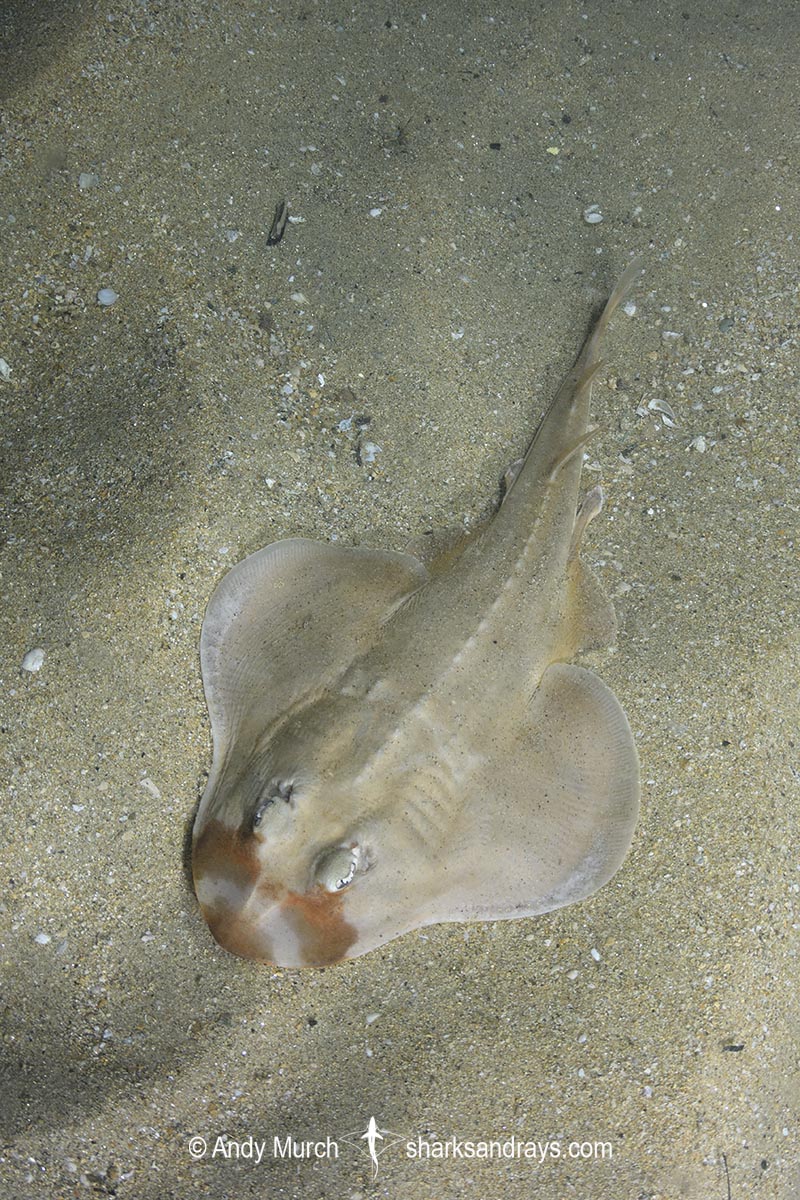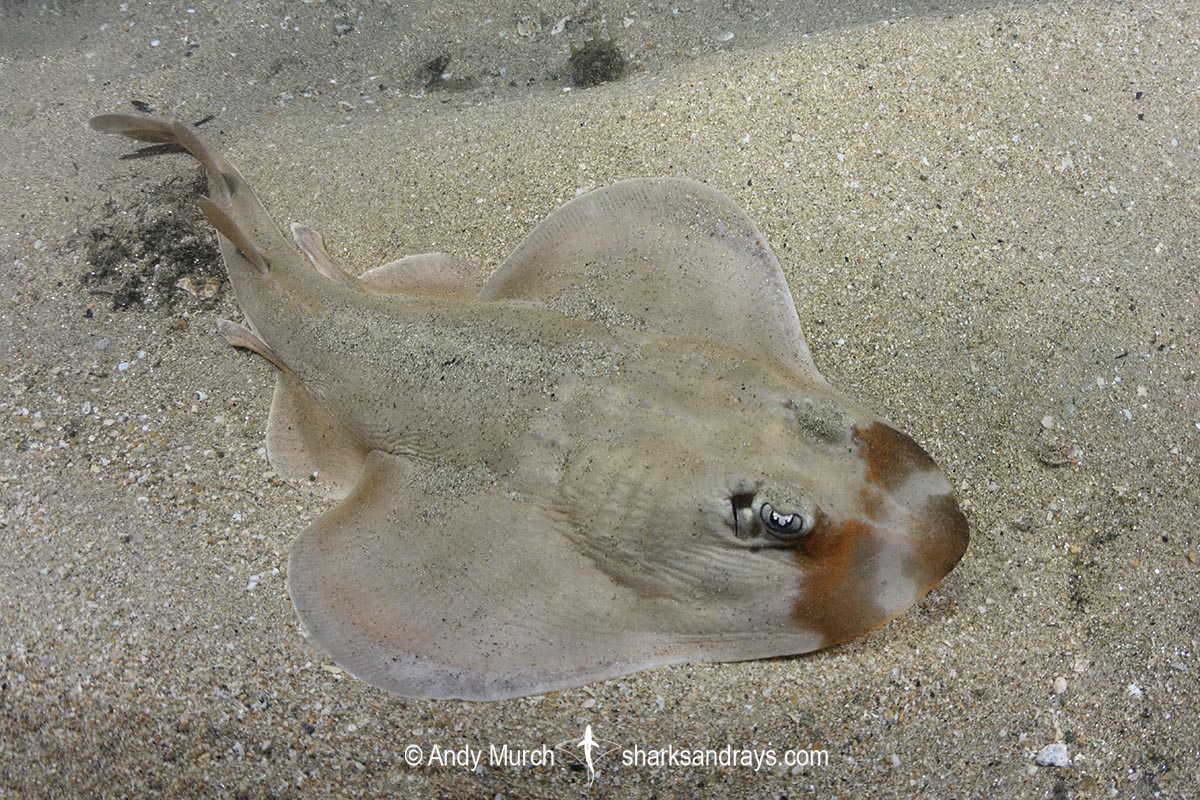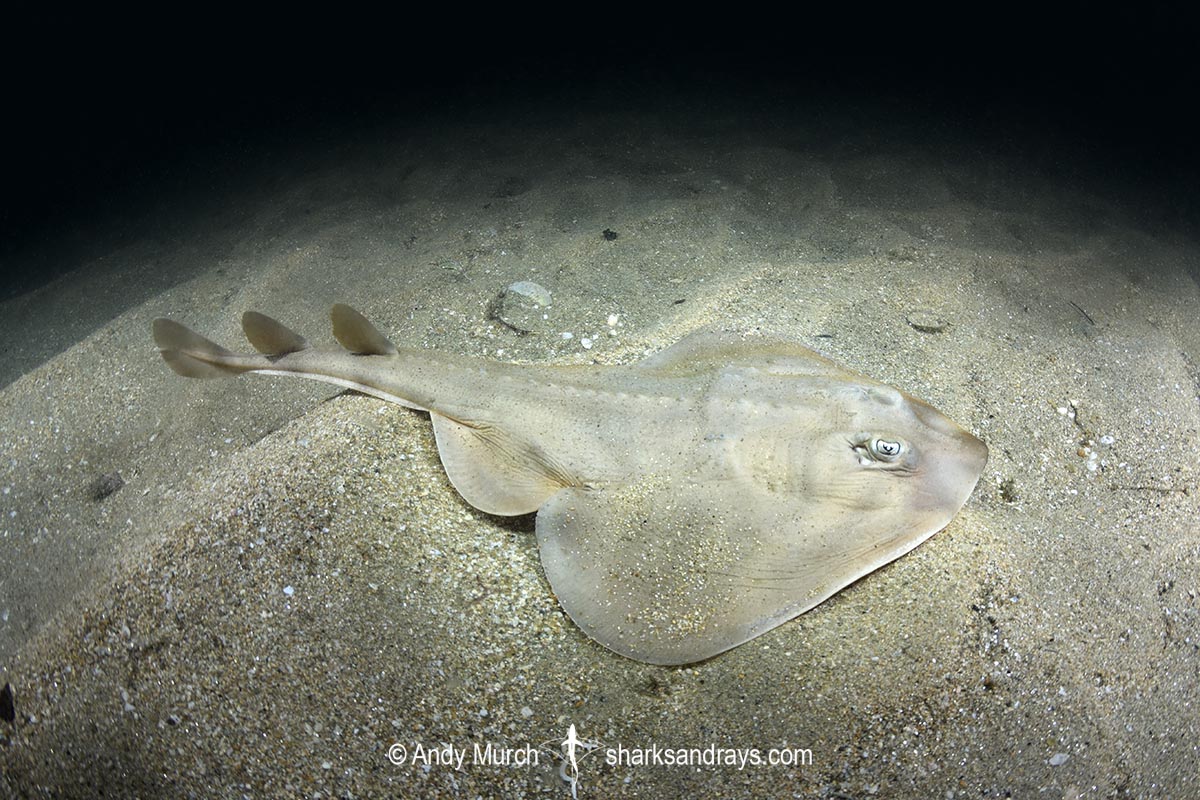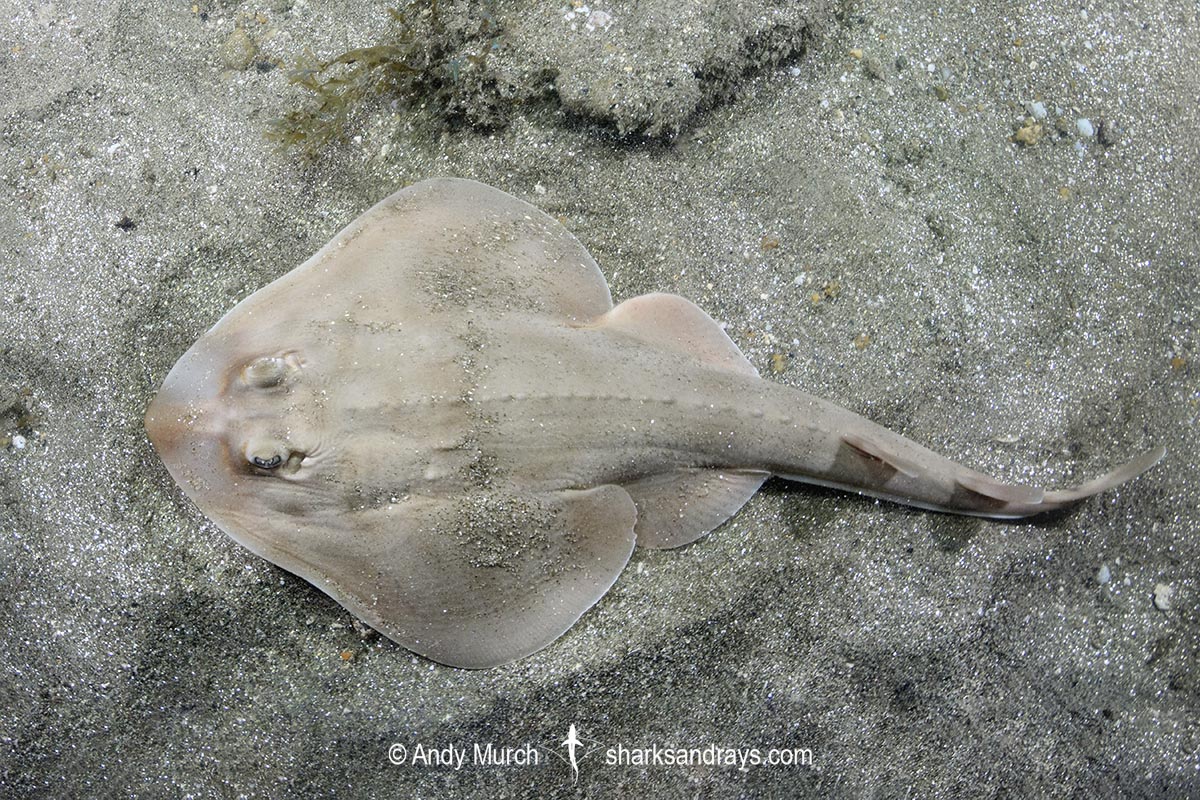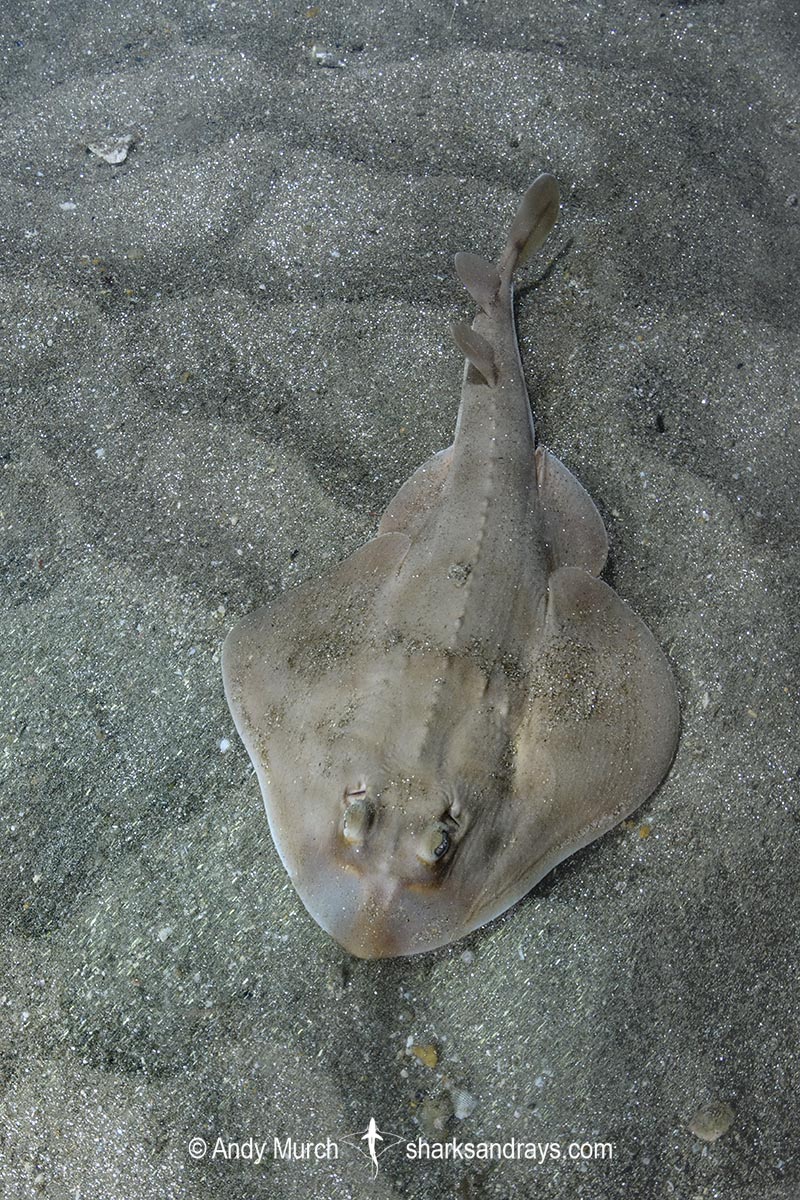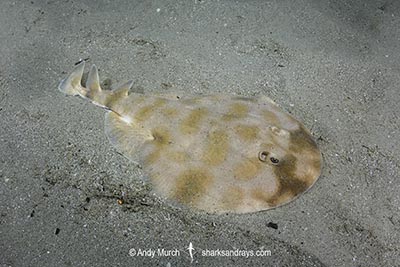Common names
Shortnose Guitarfish, Lesser Guitarfish.
Binomial
Zapteryx brevirostris
Synonyms
Rhinobatos brevirostris, Rhinobatus brevirostris, Syrrhina brevirostris
Identification
A small guitarfish with a shovel-shaped disc and a short, broadly rounded to obtusely angular snout. Snout anterior angle approximately 106º. Rostral ridges well separated. Eyes large. Spiracle with one small posterior lobe. Preorbital length 2.1-2.5 x orbit length. Nostrils thin. Nasal curtain absent. Inner edges of nasal flaps extend well into nostril opening.
Anterior margins of disc undulate; more so in males. Pectoral apices broadly rounded. Dorsum covered in denticles of varying shapes and sizes. Ventral denticles smaller and flatter. Two short parallel rows of thorns on each shoulder. 21-23 large thorns on midline from nape to first dorsal fin.
Tail fairly robust with a pronouced caudal keel. Distance between dorsal fins equal to or slightly less than first dorsal fin base length. Dorsal fins higher than long, with broadly rounded apices and convex posterior margins. Caudal fin sub-triangular. Margin of lower caudal lobe convex. Upper caudal apex tightly rounded.
Colour
Dorsum greyish-brown to yellow-brown, sometimes with subtle dusky patches. Reddish brown to dark brown band sometimes present across snout. Lateral edges of eyes and caudal keel off-white. Ventrum pale or greyish with dusky pectoral and pelvic apices.
Size
Maximum length 66cm. Size at birth 13-16cm.
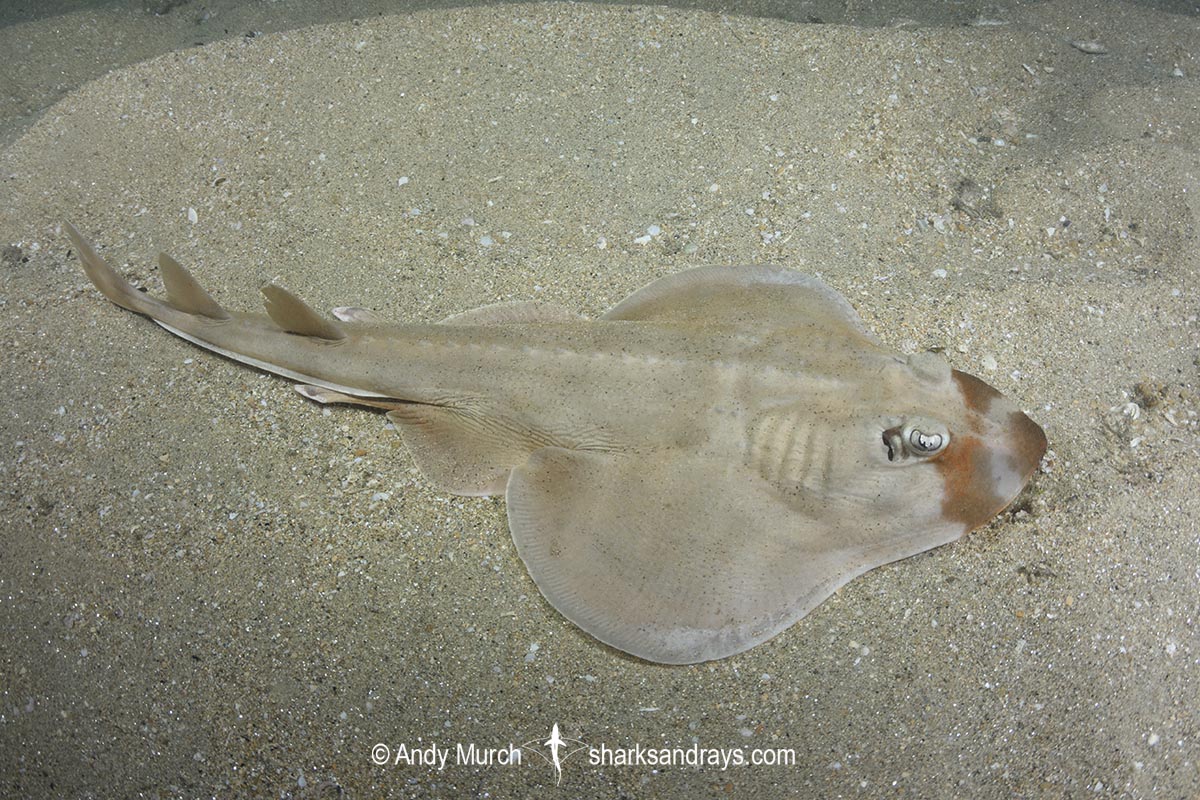
Conservation Status
ENDANGERED
The Shortnose Guitarfish (Zapteryx brevirostris) is heavily fished and usually retained in intensive (largely unmanaged) artisanal and commercial ground fisheries throughout its range. It is estimated to have declined by 50-79% in the last 21 years.
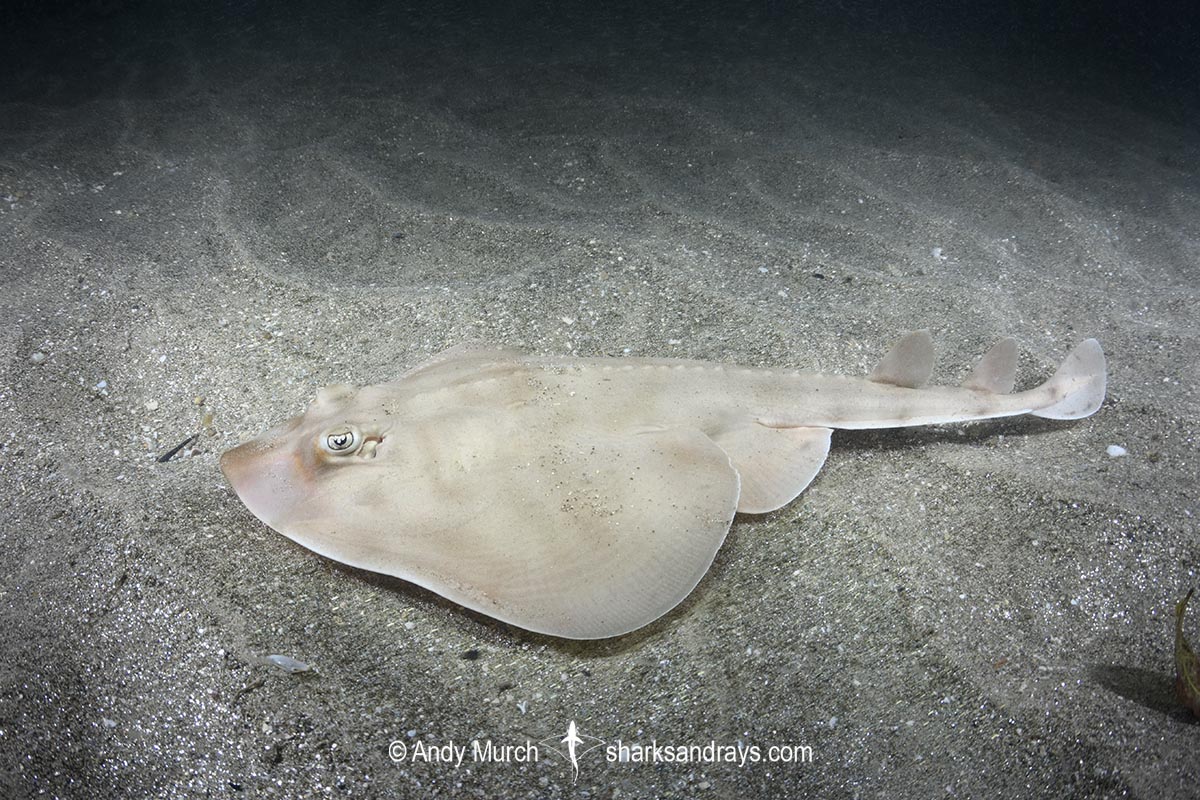
Habitat
Tropical to temperate seas. Sandy and silty substrates. From 2-140m
Distribution
Southwestern Atlantic. North of Rio De Janeiro southward to Patagonia.
Reproduction
Aplacental viviparous. Litter size 1-8. Gestation approximately 12 months.
Diet
Feeds at night mainly on small benthic crustaceans and polychaete worms.
Behavior
Moves inshore at night to feed.
Reaction to divers
Very easy to approach. Usually remains motionless unless closely harassed.
Diving logistics
Shortnose guitarfish are common on inshore night dives in Brazil. I found three in 2-3m on a September night dive in Buzios.
They are occasionally seen during the day at numerous sites from Buzios, southwards to southern Brazil. They have been seen by divers as far south as Mar del Plata in Argentina, but are more commonly encountered in Brazil.
What’s new
View our full list of updates
Similar species
Brazilian Electric Ray Distinguished by rounder disc, smaller size, and usually more distinct markings.
Brazilian Guitarfish Easily distinguished by uniform colour, acutely pointed snout, and broader tail.

